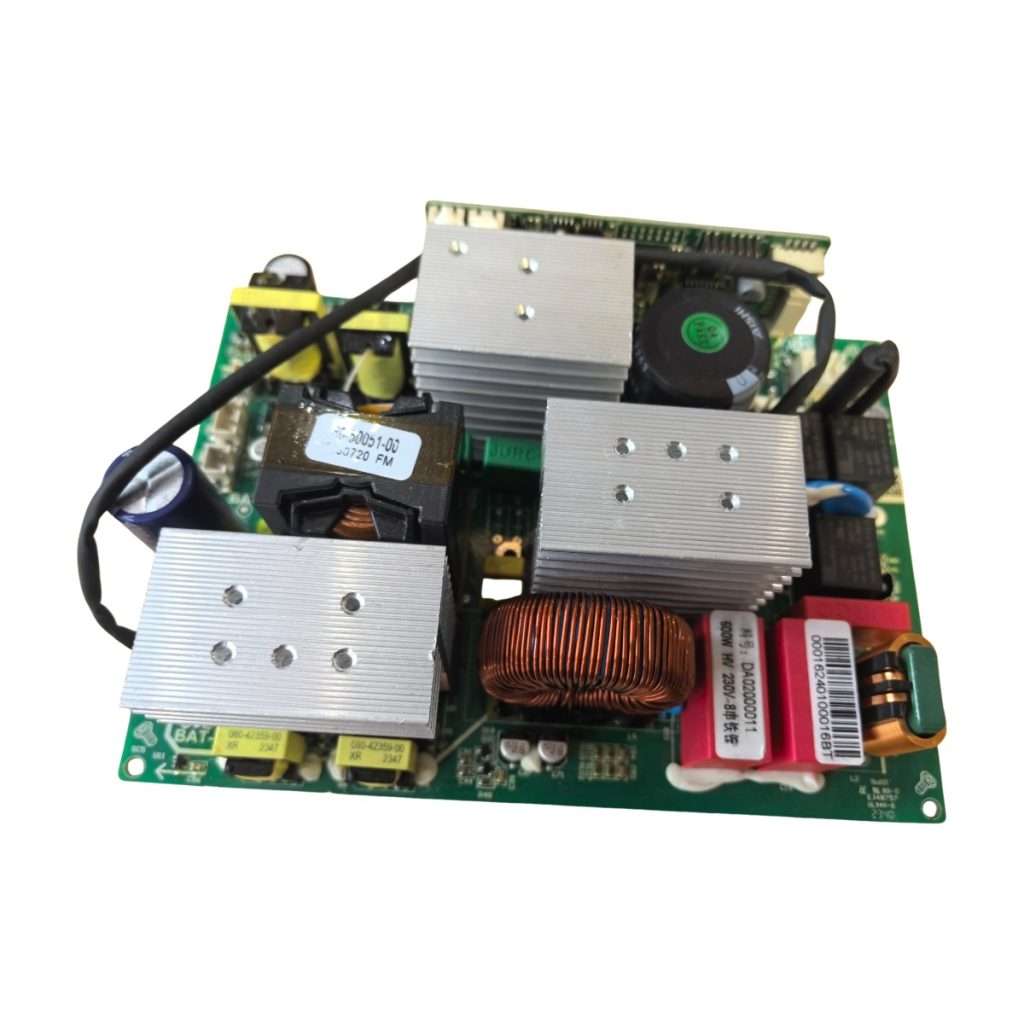Many clients will ask question about inverter parallel connection of our inverter boards, this article will share information about how to operate parallel connection with shiningintl inverter products.
the Inverter Parallel Connection refers to the technical process of connecting multiple inverters together to operate in sync, it can share the load or feed power into the grid as a unified system. This setup is widely used to increase total power capacity, ensure redundancy, or create multiphase outputs (e.g., three-phase power). The Shiningintl inverters(such as the 6KW inverter board) can provide the paralel connection capability to increase the output capability Below is a detailed breakdown:

1. Key Objectives
- Power Scalability: Combine multiple inverters to achieve higher total power output (for example , use 3 6KW shiningintl inverter boards to output higher power rated, 3 × 6kW inverters → 18kW system). in Shiningintl, the parallel connection inverters is 6 in maximum.
- Redundancy: If one inverter fails, others continue supplying power, critical for UPS or mission-critical systems.
- Multiphase Output: Three single-phase inverters with 120° phase shifts can synthesize three-phase AC power (e.g., 380V line-to-line voltage). Shiningintl 6kw inverter board also provide this single phase to 3 phases function.
2. Technical Principles
A. Synchronization Requirements
- Frequency Sync: All inverters must operate at the exact same frequency (e.g., 50Hz ±0.1Hz).
- Phase Alignment: For three-phase systems, phase angles must be offset by 120° precisely.
- Voltage Matching: Output voltage amplitudes must align within <1% deviation (e.g., 220V ±2V).
B. Control Methods
- Power Scalability Control:
- Our board has provided the interface to set up the power scalability function , please refer our operation instruction book.
- 3 phases Control:
- Our board has provided the interface to set up the 3 inverters into 3 phase output with 120 degree shift , please refer our operation instruction book.
3. Applications
| Scenario | Configuration | Example |
|---|---|---|
| Residential Solar | 2–3 grid-tie inverters in parallel | Expand rooftop PV system capacity. |
| Industrial 3-Phase Power | Three single-phase inverters at 120° shift | Drive 380V motors or CNC machines. |
| Data Center UPS | N+1 redundant parallel inverters | Ensure uninterrupted power for servers. |
| Off-Grid Microgrid | Hybrid inverters + battery storage | Island systems with solar/wind/diesel. |
4. Critical Challenges
A. Circulating Currents
- Cause: Small voltage/frequency mismatches create internal currents between inverters (not delivered to the load).
- Solution: Shiningintl has improved synchronization accuracy, added current-limiting reactors, and used adaptive droop control in our inverters, our inverter boards can solve this circulating current problem perfectly.
B. Harmonic Distortion
- Risk: PWM switching harmonics from multiple inverters may combine, increasing total THD.
- Solution: Shiningintl implements interleaved PWM techniques to solve this harmonic distortion problem.
C. Load Sharing
- Uneven load distribution can overload individual inverters.
- Fix: Shiningintl company chooses active current-sharing algorithms (average current sharing).
5. Steps to Parallel Inverters
- Hardware Setup:
- Connect AC outputs to a common busbar with circuit breakers.
- Link communication ports (UART) for synchronization.
- Parameter Configuration:
- Set inverters to the same frequency, voltage, and phase angle.
- Assign master/slave roles or enable droop control mode.
- Testing:
- No-load test: Verify synchronization (oscilloscope for phase alignment).
- Load test: Gradually increase load to check current sharing and stability.
6. Key Considerations
please be careful that all operations are only suitable for Shiningintl inverters(detail models please consult Shiningintl), and each connection can only choose same model inverter(for example, you can choose 3 6kw inverters, but can’t parallel connection 2KW inverter, 4kw inverter and 6kw inverter.)
- Compatibility: Use identical inverter models/firmware versions.
- Protection: Enable overcurrent, overvoltage, and anti-islanding protections.
- Cooling: Parallel operation increases heat; ensure adequate ventilation.
Application System Case:
Case 1: increase 1 phase 220VAC output capability
3 × Shiningintl 6KW inverters in parallel → 18kW system with seamless grid integration.
Formula:
For three-phase systems, line-to-line voltage is:
Vline=3×Vphase
(e.g., 220V phase → 380V line voltage).
By addressing synchronization, load balancing, and harmonics, parallel-connected inverters enable flexible, reliable power systems for residential, industrial, and renewable energy applications.
Case 2:output 3 phases 380VAC voltage
please refer to the How to setup the 3 Phase 380VAC output with Shiningintl inverter boards
